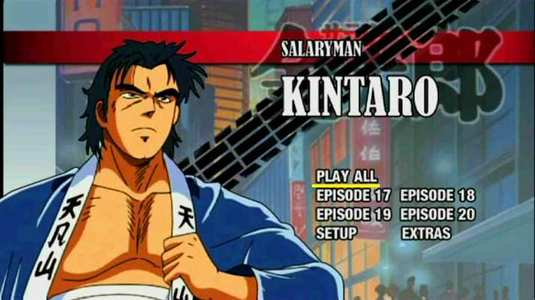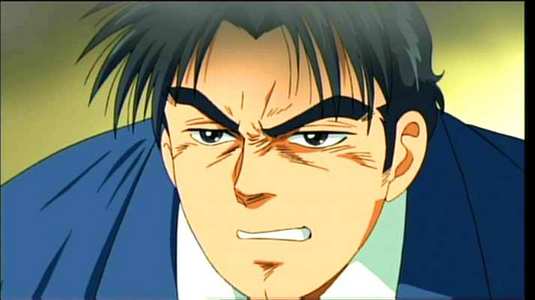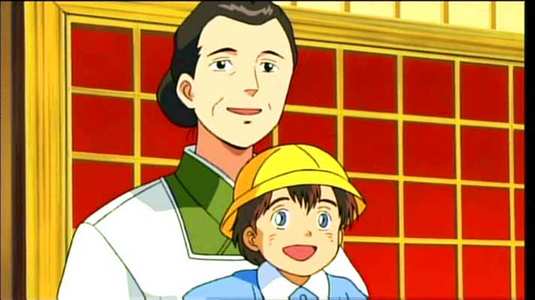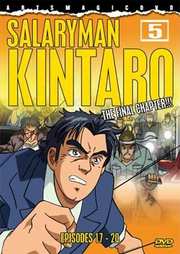Review of Salaryman Kintaro: Part 5
Introduction
Japanese anime is a veritable feast of story ideas, with the fantastic and exotic becoming commonplace in the world of animation. Browse in your local anime emporium and you`ll find sci-fi set in the distant future, stories about cyborgs, spaceships, post apocalyptic Earth. You`ll find madcap comedies where ineffectual nerdish teenage boys can attract legions of sexy females, or you can find intelligent stories that challenge the very perception of reality, as well as historical epics, horror, Westerns, even erotica. In other words, whatever the human mind can envisage can be brought to life in animation form. Salaryman Kintaro is the story of a white-collar worker in a construction company. Anime also apparently handles the mundane.
The white-collar worker drives modern economies, and in Japan more than most. It is a whole subsection of society that serves in offices the nation over. These modern day serfs are expected to swear loyalty to a company in return for a job for life (at least that was the idea before the last recession). The company always comes first, above and beyond lesser matters like personal well-being or family. Twelve-hour days are commonplace, and the work culture extends beyond work hours, as it is expected for work colleagues to socialise when the day is through to build team spirit. The Salaryman is the vital grist that the wheels and cogs of Japanese industry grind up and spit out.
Salaryman Kintaro is the reaction to this culture of overwork, first explored in the manga by Hiroshi Motomiya. This anime adaptation follows the career of Yajima Kintaro, who once led a bike gang of 10000 members and had built a reputation as a tough guy. Becoming a father changed all that, and now raising his son alone after the mother died in childbirth, he`s vowed to become respectable. He`s got a job at Yamato Construction, where his straightforward attitude, and tendency to speak with his fists has made him stand out where quiet mundanity is the required attitude. This final volume of Salaryman Kintaro concludes the story, and we see how far Yajima Kintaro has come. Now a respectable salaryman, he has to stand up to the institutional corruption at city hall, but finds that doing the right thing isn`t always enough. This disc from Artsmagic contains 4 episodes.
17. Kintaro Prearranges Bidding
Kintaro`s making waves in Kahoku by landing his first potential contract barely a month into his new job. All that`s left is the actual bidding, and that`s usually a foregone conclusion. Not this time though, as Kahoku`s big fish, Hokuto Construction gets wind of the impending agreement. They`re not about to let their monopoly slip.
18. Dark Fog In Kahoku
The gloves are off! By dedicating itself to ending the bureaucrats` stranglehold on construction in Kahoku City, Yamato Construction has effectively declared war on their rivals Hokuto. But with corruption infusing every level of the industry, they may have bitten off more than they can chew.
19. Kintaro Writes A Letter Of Resignation
The corruption scandal in Kahoku has hit the headlines. But with hapless scapegoats taking the fall, Yamato Construction and Yajima Kintaro can`t breathe easily just yet. Hokuto Construction will succeed at any cost, and they have the yakuza connections to make it happen.
20. Kintaro Becomes Unruly
With Hokuto acting outside the law, Kintaro realises that he can`t fight them as a salaryman. But he can fight back as the leader of a biker gang. It`s time to finish this, even if it means sacrificing his career.

Video
This final disc takes a hit in the visual quality by being compressed onto a single layer disc. Compression artefacts are immediately apparent in the 1.78:1 anamorphic transfer, as is an increased softness to the image, and the sort of cross-colouration that leaves yellow smears next to black lines. It doesn`t reduce the enjoyment of the show, but the failure in consistency is noticeable. The animation itself isn`t up to the standard of most modern anime, and indeed were it not for the anamorphic format, I`d take it for a much older programme. The main character designs are distinctive, but some of the supporting characters seem a little generic. The animation is simple and lacks dynamism. It`s reminiscent of older shows where time would be spent on animation only when the story demands it.
That said, the story isn`t adversely affected by this stylistic choice, and it soon fades from the awareness.

Audio
You get a choice of a DD 5.1 or DD 2.0 Japanese soundtracks, no English dub here I`m afraid. There is the odd moment where dialogue on the surround track is subdued by effects or music, but by and large the track does the show justice, without exhibiting significant flair. Salaryman Kintaro is another anime that has a toe tapping theme tune, although the end theme is a little too Chris De Burgh for my liking. As with all the Artsmagic DVDs that I have encountered, there are two subtitle tracks with the programme, differing only in the size of font. It`s a useful addition that takes into account difficulties of vision and differing screen sizes. The subtitles were legible throughout.

Features
The discussions with the Director and Producer of the show conclude on this disc. Director Tomoharu Katsumata gets a 9-minute interview where he talks how he works, the creative team he gathers around him and where he would like to see Kintaro go next. Also on this disc is a 3-minute interview with producer Toru Nakano. He also explains his ambitions for more Kintaro animation.

Conclusion
The drama kicks up a gear in this final quartet of episodes. Salaryman Kintaro certainly concludes with a bang, as Kintaro takes everything he has learned so far and uses it to battle corruption at City Hall. It`s certainly his toughest challenge, but with his adversaries prepared to do whatever it takes to win, regardless of the consequences. There is a palpable sense of dread in these final episodes, a feeling that everything is truly at stake. It certainly is a worthwhile payoff for those who have stuck with the series thus far.
Salaryman Kintaro has been about Kintaro`s journey, and we have seen a good couple of years of his life compressed into these 20 or so episodes, indicated by the growth of his son Ryuta from pacifier sucking toddler into a kindergarten student. We have also seen Kintaro grow from barely groomed lout into a respectable pillar of Yamato Construction. His positive outlook and no bullshit attitude has endeared him to some, and inspired many more, and it`s no surprise that he has not one but many mentors. Kintaro`s strong, forthright and fiercely independent, which has held him in good stead up to this volume. Here he learns his most important lesson, that no man is an island. First he learns about teamwork, but when the altercation with Hokuto erupts, he makes the mistake of falling back into old patterns. Here he learns that weakness can be a source of strength, that it isn`t a failing to rely on others, to need others. Over the 20 episodes, Kintaro has managed to transform from a biker thug to a valuable member of society without sacrificing his individuality. It`s easy to see the core message of Kintaro and how it relates to Japanese audiences. It`s to its credit that the message it delivers can be universally interpreted.
Salaryman Kintaro is my favourite soap opera anime. Actually it`s the only soap opera anime that I know of, but I`m sure there are countless others. Western audiences` exposure to anime is as a drop in the ocean compared to what domestic Japanese audiences get. But the political manoeuvring, corporate battles, relationship travails, and cast of interesting characters make me nostalgic for the shoulder-padded eighties potboilers that I was once so addicted to. The unfortunate thing is that while Kintaro definitely has a conclusion in this volume, it isn`t necessarily the end to the Kintaro story. Like many manga adaptations, there is a great deal of story that didn`t make it to the screen, and it`s easy to see that there could very well have been further series of Salaryman Kintaro after the end of this one. There are also a couple of plot lines left hanging, such as the final disposition of Kintaro`s father, and the character of Takatsukasa whose scheming is left unresolved. It ultimately doesn`t impact on the conclusion though.
This isn`t an anime that has been gifted with a major budget. The animation is cheap and cheerful, and positively archaic in style. But the main characters are distinctive enough, and the animation does enough in getting the story across. This is well worth a look if you want something different from your anime, and it provides an interesting window into another work culture. The story has been enjoyable throughout, and while it won`t rank as the best animated series to hit our screens, there is something endearing about the characters, something charming about the minimalist style that means that it won`t be hidden shamefully at the back of my anime collection.



















































Your Opinions and Comments
Be the first to post a comment!